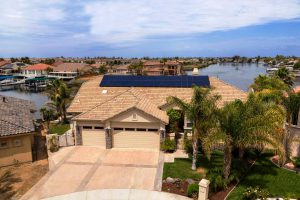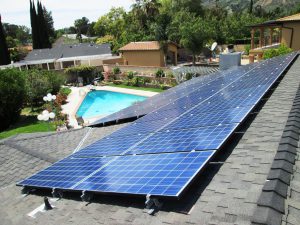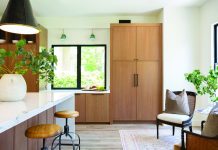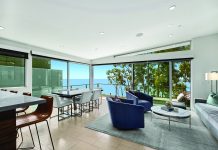By Gina Dostler
May 20, 2016
Ryan Willemsen, CEO of Solar-to-the-People founded the company when he realized there was a lot of confusion surrounding solar power. His informative website solar-to-the-people.com gives a third party look into the solar industry, providing knowledge to power the decision to generate solar energy into the home.
 Q: What is your main goal with Solar-to-the-People?
Q: What is your main goal with Solar-to-the-People?
A: To provide a source of excellent recommendations and quote comparisons through a set of filters on our website. A problem with solar is its growing snake-oil salesman reputation and selling for sales sake. The general population is just beginning to understand the solar power industry. For instance, back in 1915 people really didn’t know what to expect in a car. But today, everybody has a general idea what they are looking for and the reputations of car makers.
Q: What’s the first step to going solar?
A: Locating the right installer. With over 500 different companies in Southern California alone, looking for a solar power company can get very frustrating. For instance, some installers have other types of businesses along with installing solar. Some of them simply focus more on the financial end of it. We’ve done most of the legwork to get quality installers to you and also give you the knowledge to make the right decisions.
Q: What are your criteria?
A: Customer service is a key point with us. But craftsmanship is very important as well. Some companies try to put in 3 or 4 installations in one day and end up cutting corners. The racking system which holds the panels takes time to construct. Finding the joists in the roof to secure the racks takes time. I’ve found mid-size companies ran by engineers are much more detail-oriented with excellent workmanship.
Q: How do you source your installers?
A: Sourcing installers comes from a combination of recommendations from people in the industry and homeowner feedback. Installers do not pay a fee to join the network, they have to be invited. However, they do pay us a referral fee from successful installations. That’s our source of revenue.
Q: Is it really worth it to put in solar panels?
A: In Southern California, with the amount of sun you receive and relatively little shade to the roofs, it’s good to consider solar. There is no magic number, but what we suggest is if your power bill is $175 – $200+ a month, yes, it makes a lot of economic sense to go solar. And the savings can be anywhere from 20% up to 40% drop in your bill.

Q: How would I know what is good quality equipment?
A: For panels, it’s a bit complex since a number of manufacturers sell both mid and high-grade panels. The top 10 panel brands we generally recommend for mid and high-grade panels are LG, Kyocera, SolarWorld, Suniva, SunPower, Canadian Solar, REC, Sharp, Hyundai, and Yingli. The top inverter brands we generally recommend are, SolarEdge, Enphase Energy, SMA America, ABB, Solectria Renewables, and Fronius.
Q: How does one choose the right proposal?
A: Be sure to always get more than one proposal and look at them on a per watt basis. Ask how much are you paying for the system per unit of power produced. Sometimes they give it in kilowatts. So 1 kilowatt is 1,000 watts. Small roof size limits homeowners due to the amount of panels they can put up, and they usually get more expensive higher efficiency panels to zero their power out. But with a large roof, mid-grade panels are sufficient because financially it works out cheaper per watt.
Q: Other advice?
A: Be sure to evaluate the warranties side by side. Look at the responsiveness of the installers. Do they answer your questions fast and clearly? Good communication is essential. Avoid installers that are very pushy with leases. And look for those installers that are flexible and cater to homeowner needs, such at no street facing panels or preference for a ground mount.
Q: What about Spanish style roofs?
A: Installers can do tiles now. Where the racking feet need to placed, they take the tile off and put regular shingles on it. The panels hide the missing tile.
Q: Tell me about the current tax breaks.
A: Homeowners served by Southern California Edison receive one federal tax break and net metering from SCE. The Federal Investment Tax Credit of 30% was extended for solar last year in December for 5 years. There is a ramp down schedule though. If you started solar construction before 2020 you get 30%. If started during the year of 2020 it is 26%; 2021 it is 22%. In 2022 it theoretically drops to 0, but I feel this is unlikely to happen. Then there is Net Metering.
Q: Which is grid usage, correct?
A: Yes. If you put a solar system on your house, you have your own power facility. During a typical summer day a lot of power is produced. It is usually more than the needs of the house since most people are away at work. When more power is produced than needed, it goes as a credit towards your utility bill, not a debit. And these credits roll-over into the winter months when your panels might produce less power than you use in your home.
Q: But what about rates?
A: Currently, when you produce power from your solar panels, you get the same rate as your buying power from the grid. Homeowners who installed solar before December 31, 2015 were grandfathered in at the retail rate for the next 20 years. In February 2016, the California Public Utilities commission decided that in the next three years the retail rate would still be available to those who get solar power. At the end of the three years, the commission will revisit it. In my opinion, it’s a very low probability they will cut it off. They will keep it the same or just reduce the rate. They wont’ take it to zero. It is hard to tell what might happen in the future, but for now, it is still going to be a significant credit.
Q: Other notes to homeowners considering going solar?
A: Every house has an electrical panel that interfaces with the grid. These panels have a certain capacity, or electrical load. If you put in a huge new solar panel system, a house built in the 60’s or older probably doesn’t have a panel that can handle the amount of current running through it. Any good installer will ask about the electrical panel before setting up the solar panel system and include replacement in the quote if necessary.
CONTACT INFORMATION
Ryan Willemsen
CEO and Founder
Solar-to-the-People
619-798-8038
Solar-to-the-people.com
PHOTO CREDITS: LA Solar Group



